Homeowners looking to save a penny on home improvement projects should conduct thorough research. If you wish to make your doors, the first question should be: How wide should the stiles and rails be? We've done plenty of research and have the answers below!
Stiles on cabinet doors are about two inches, including the dividing stiles. The rails have a width of one and a quarter inches to one and a half inches for the bottom, two inches for the dividing center rail, and three inches for the top rail.
Depending on the wood type, the thickness is three-quarters of an inch to an inch. The door width and design determine the width of rails and stiles for entry doors.
The vertical parts of the door are known as stiles, the rails are horizontal pieces, and the panels are in between the two. Continue reading as we break down the doors and detail each part's measurements.
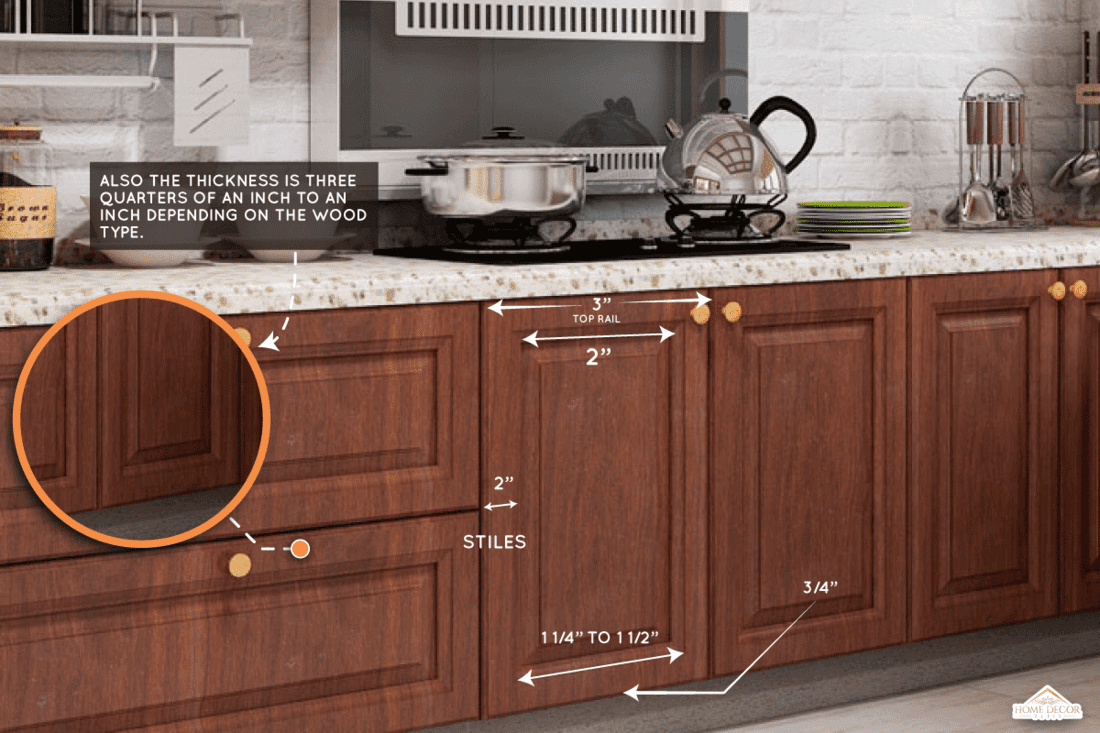
Stiles And Rail Measurements
Doors are hardly carved out as one piece. They are constructed, meaning they are made piece by piece, which makes them lighter. The same principle applies to any door in your home.
Understandably, not all doors in your home are the same size. So, the measurements of the stiles and rails on differ immensely.
Cabinet Doors
We sometimes add affiliate links and content that was curated and created by our team with the help of advanced ai tools to help showcase the best design styles.

Doors for your kitchen cabinets may be custom-made, or you could buy standard ones. Regardless, the stiles on cabinet doors should be between two to three inches.
However, makers of custom-made cabinets stick to three inches for the whole cabinet. Sometimes a raised panel stile may seem like two inches but could be wider. It's due to the rounded bead from the inside covering the perimeter.
The center stiles that divide cabinets into two usually are two inches wide. Similar measurement also applies to the face-frame stiles used on some cabinets and the fabricated cabinets' stiles.
The top and bottom rails may vary in width for face-frame rails. The top rail is usually three inches wide in most cases, while the divider rails are often two inches.
The standard width for the bottom rail is one and a quarter or one and a half inches. The rails measurements aren't fixed for custom-made cabinets.
There are different cabinet door sizes, and you'll have to adjust the width of the stile and rails accordingly. Here are the most common cabinet door types and the widths recommended by experts for the rails and stiles.
Inset Panel And Raised Cabinet Doors
The stiles and rails usually have the same width for these doors. The width ranges from two to two and a half inches. In rare cases, the two may vary based on the design of the door.
Full-Length Linen Closet Doors
For a full-length door, such as a linen closet door, the rails and stiles have the same width of two or three inches. These doors are classified under cabinet doors because they don't weigh like the entryway or regular doors.
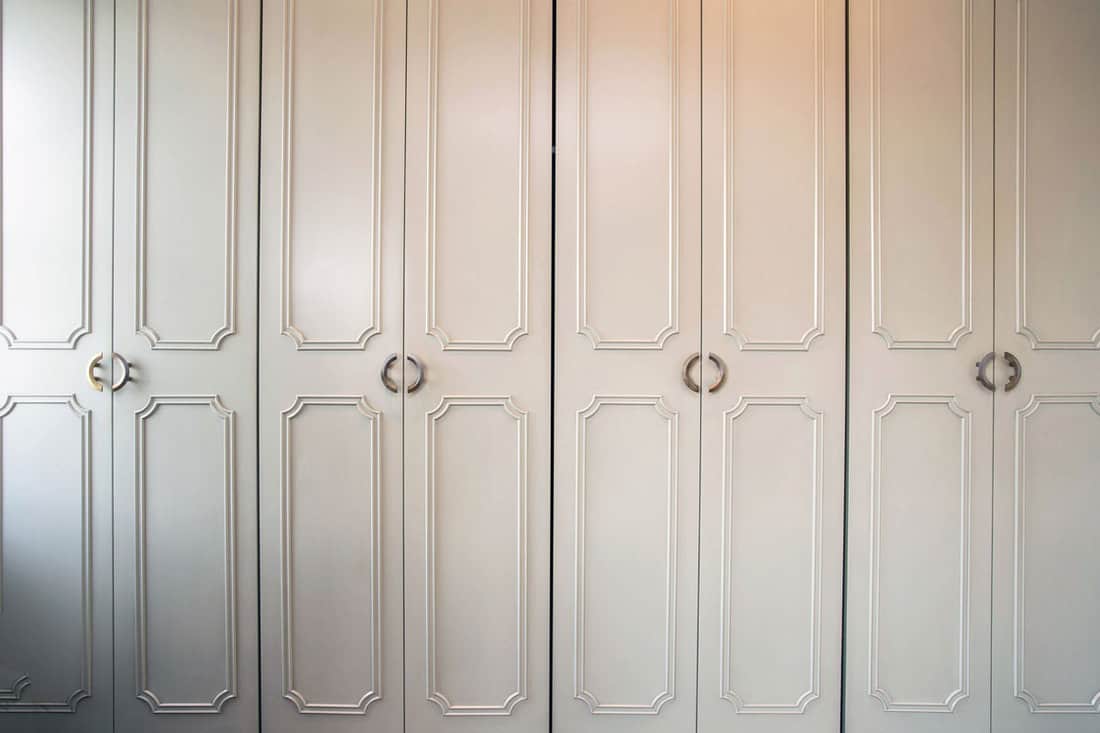
Arched Cabinet Doors
If the top rail is arched, cathedral style, the width of the top rails increases by two inches. They, therefore, measure between three to four inches. The bottom rail's width and the stiles stay at two to two and a half inches.
Cabinet makers can use any width as long as it goes with the standard widths for uniformity. Advisably, stick to the exact width of stiles throughout the cabinet making.
Entry/Regular Doors
Regarding entry doors, there seem to be varying dimensions for both stile and rails. It depends on the width of the door, the type, and the design. Stiles width is crucial to consider because of the installation of mortise locks and other exit systems.
The door takes up a large amount of space; if the stiles do not have the correct width, it will be hard to use the devices. The rail's width is also vital, especially when putting up anything on the top or bottom of the door.
According to Beacon, stiles can be four to six inches wide, while the rails can vary from one and an eighth to five inches depending on the purpose of the door.
Different companies have illustrations of different designs of panel doors, with the standard width of top rails being six inches. Mid rails are three and five-eighths inches or eight and three-quarter inches for a lock rail. The bottom rail is usually ten inches.
Most of the panel doors have a standard stile width of six inches. If you want to custom-make your door, you can calculate the size of rails and stiles using the door width.
How To Calculate Stile And Rail Size
Now that you know the sizes expected for the door stiles and rails, you can start the calculations and make the doors. These calculations work for flat or raised panel cabinet doors or other options.
Homeowners can use an online calculator to help tabulate the rail length automatically. The formula used is a straightforward one. Please note that the rail width is the cabinet door's width.
Subtract the door width from the width of two stiles, then add the depth of the panel groove(twice) to get the rail width.
Door width – (stiles widthx2) + (depth of panel groove x2) = The rail width.
Check out this digital woodworking tape on Amazon.
Watch here to see how to do this on YouTube:
For more insight on doors and decor, read this post. Should Kitchen Cabinets Match Interior Doors?
Choosing Panel Doors Using Stiles And Rails
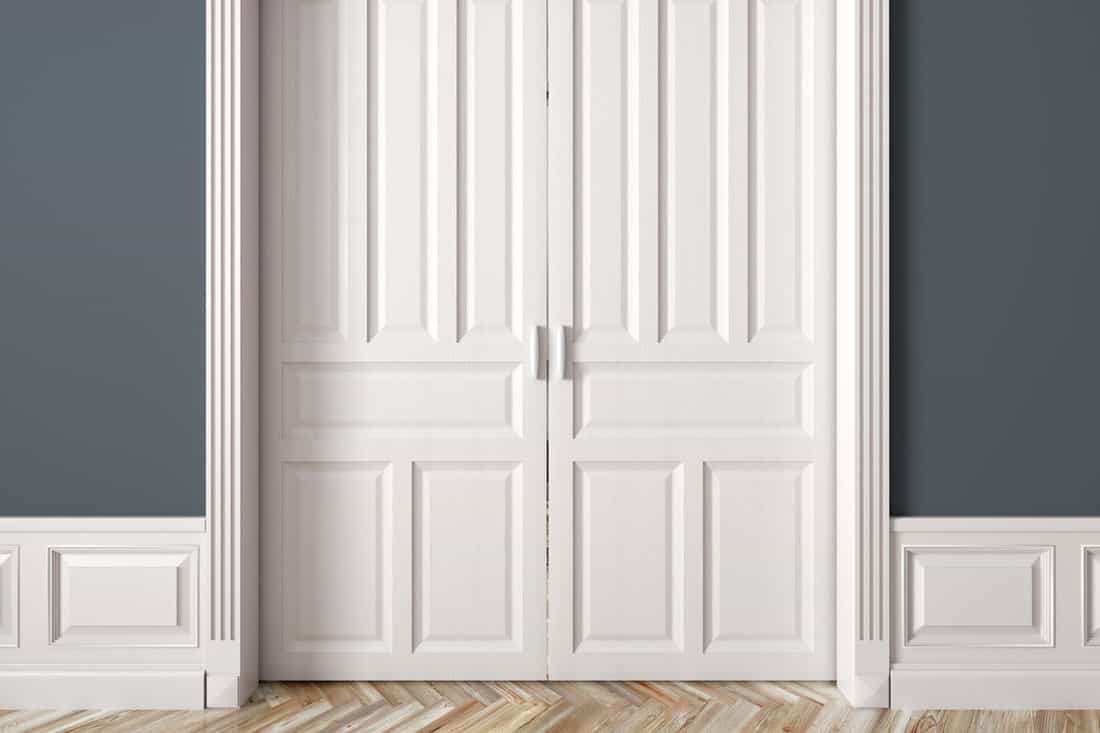
Stiles and rails are the key components that help homeowners and designers choose panel door designs. We love beautiful homes, don't we? Luckily, panel doors have an array of designs to choose from.
Stiles and rails doors are an excellent choice for interior and exterior entry. The door choice depends on personal preferences, design, and overall home appearance.
To make the right choice, let's take a look at the following:
Panel Doors Types
- Single panel door: This type has two stiles and two rails (bottom and top) with the same thickness.
- Double panel door: It has two panels, two stiles, and three rails (top, middle, and bottom.)
- Three-panel door: The door has three panels, two stiles, and four rails (one on top, two at the middle, and one at the bottom.)
- Six-door panels: It consists of six panels, three stiles, and four rails (top, two at the middle, and bottom.)
Panel Door Designs
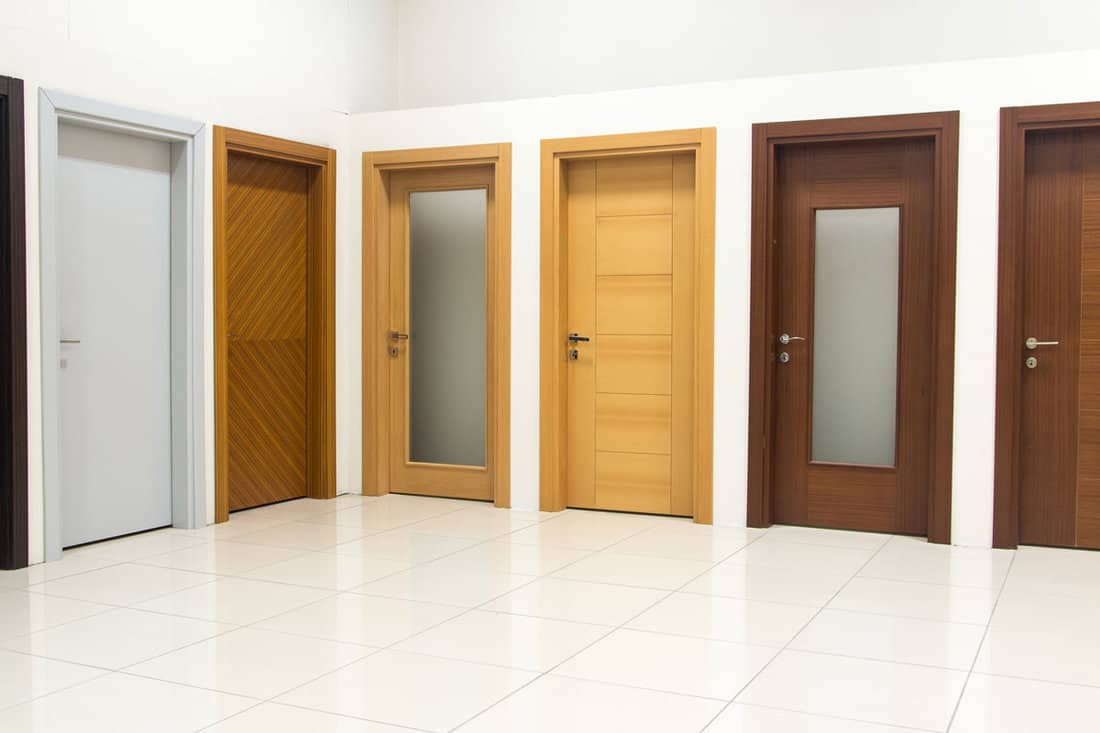
There are various designs to choose from that can serve the individual purpose of the door. The type of materials used will affect the design cost.
- Wooden: The design is ideal for exterior and interior applications and mostly comes completely varnished.
- Metal: Commonly used in commercial spaces and warehouses. They have metal panels and frames with a standard two-handle lock system. It's not a good choice for homes or residential use.
- Glass: It has a glass panel, two wooden rails, and stiles. It's ideal for interior use if you like simplicity and elegance. Treat glass doors with caution. For more information, check out this post. How To Remove A Glass Panel From Storm Door.
- Decorative: It has glass and wood, with the top panels occupied with decorative glass and the bottom part constructed from wood for a more luxurious look.
- Steel: An almost impossible door to break through. The steel panels are connected to a wooden frame.
These designs are suitable for adding security and privacy. They also have an internal locking system for extra protection.
Advantages And Disadvantages Of Stiles And Rails Doors
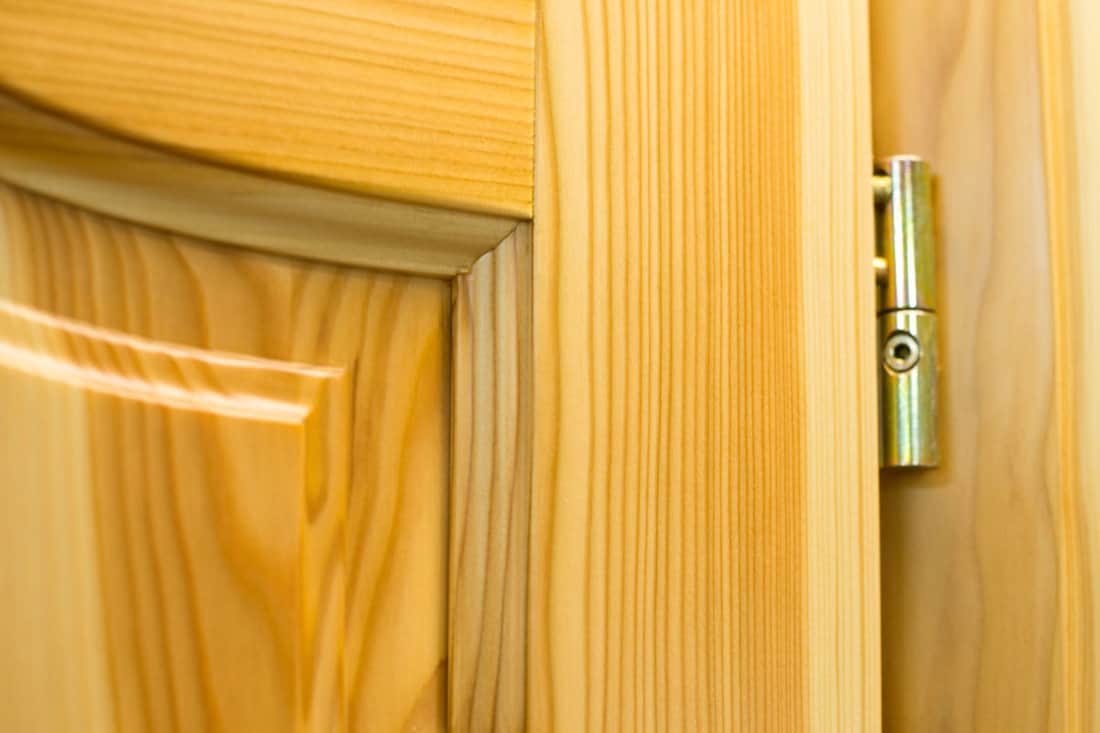
These types of doors are preferable because of the many benefits they possess.
Some of the advantages are:
- Panel doors are durable and are not prone to wear and tear.
- They are weather resistant and ideal for humid environments because they don't warp easily.
- They are easy to maintain with a bit of varnish and paint.
Click here to see this satin paint on Amazon.
- These doors are challenging to unlock.
- Compared to flush doors, panel doors are stronger and thus ideal for facades and entryways.
- You can customize them to match the rest of the decor for a more detailed look or keep it simple.
Disadvantages they might have are:
- Constant maintenance is necessary.
- Sagging over time due to the door's heaviness.
- Specific hardware is required if the door is custom-made.
To Wrap Up
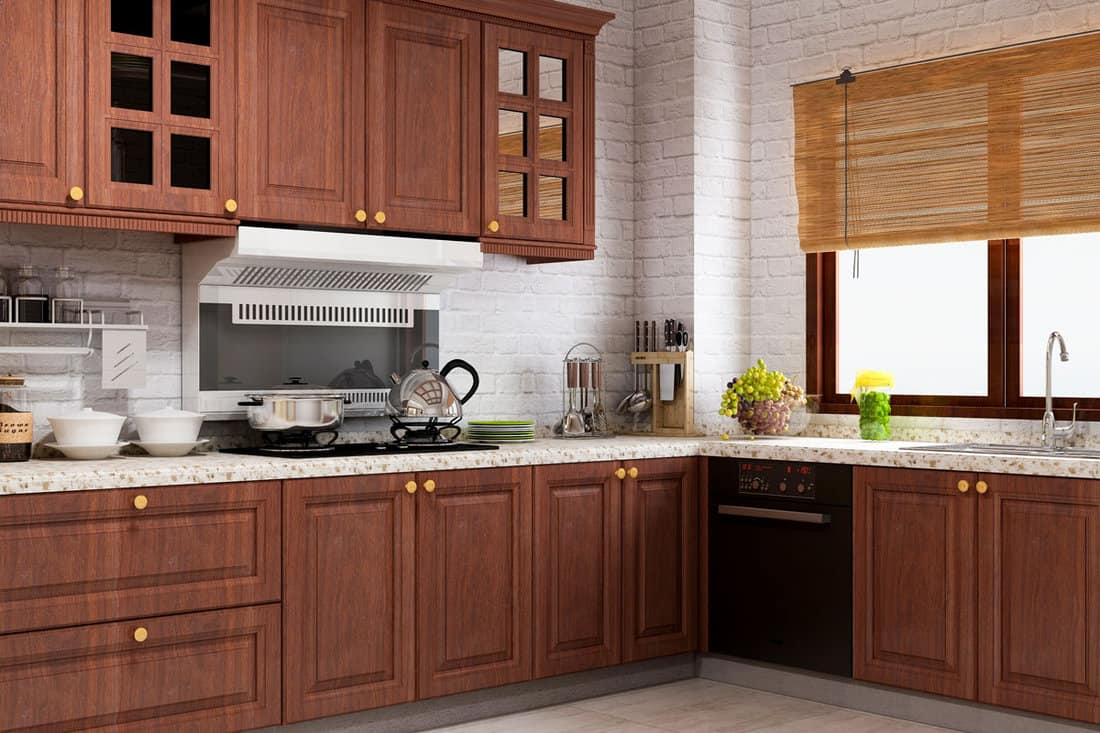
Doors can be fascinating and magical, so don't approach their construction nonchalantly. Rails and stiles are part and parcel of any panel door. Visually, they either make or break the interior or exterior decor.
The stiles and rail sizes are standard for entry or regular doors and cabinets. You can regulate the widths depending on the design and materials used.
For more insight, read this post: Should All Doors In A House Match?


